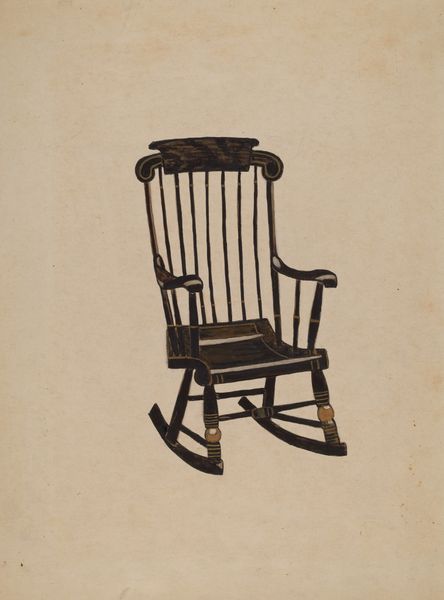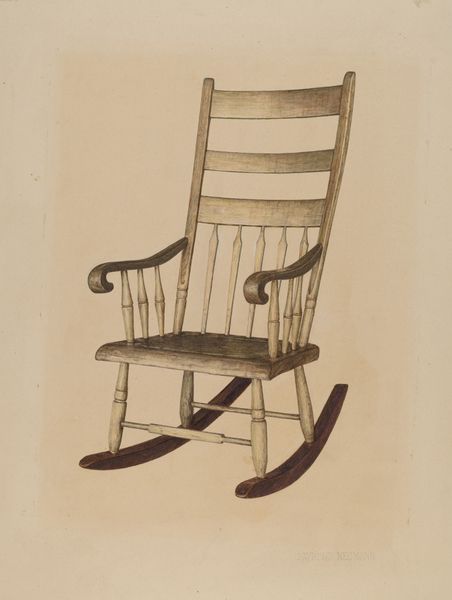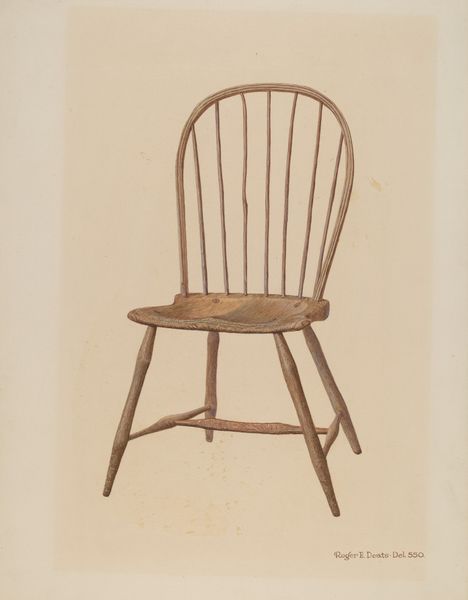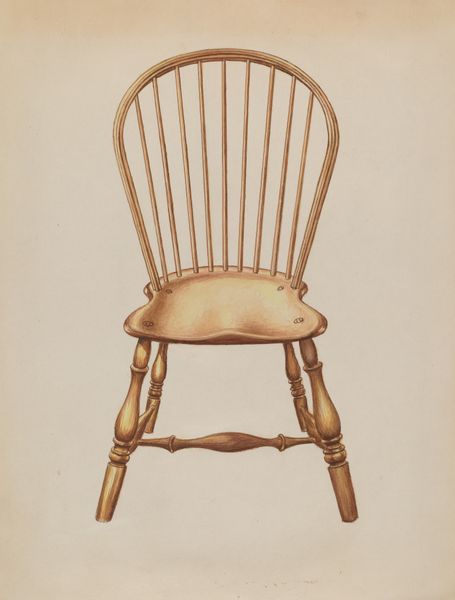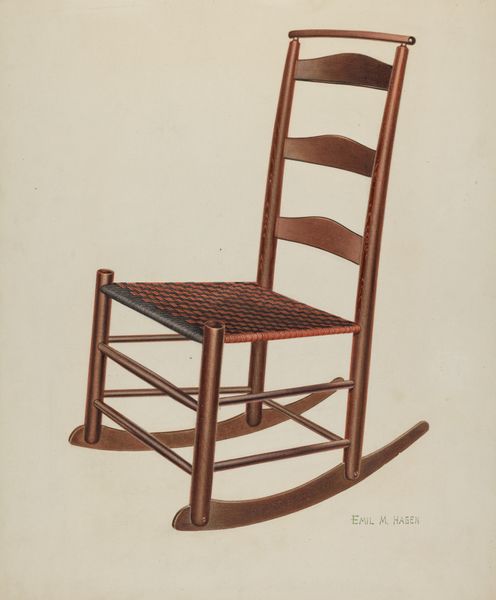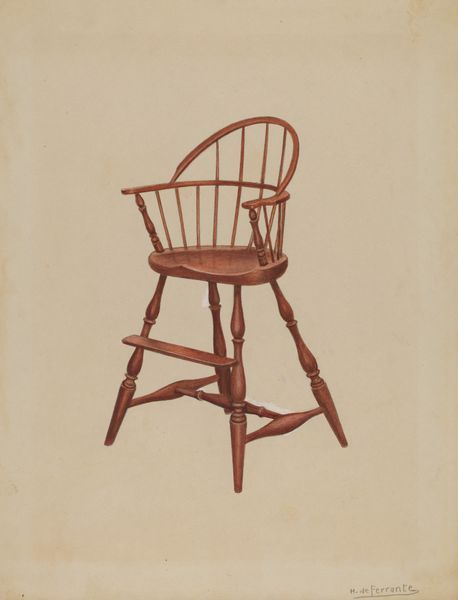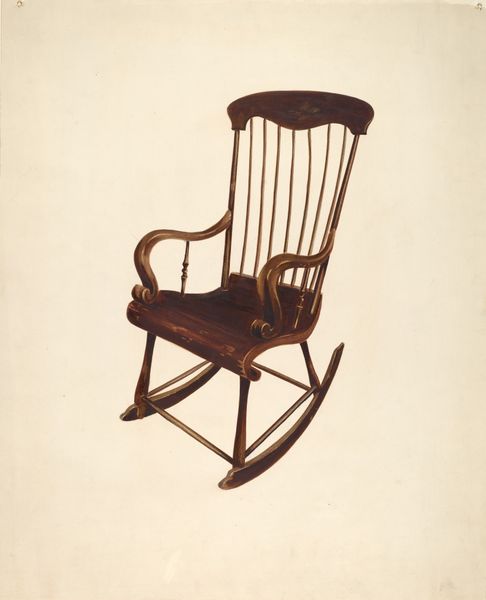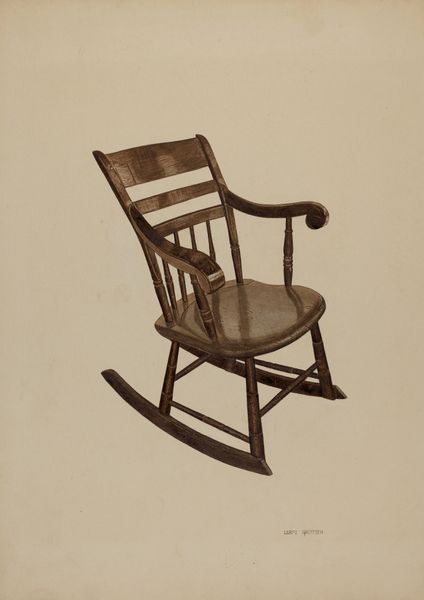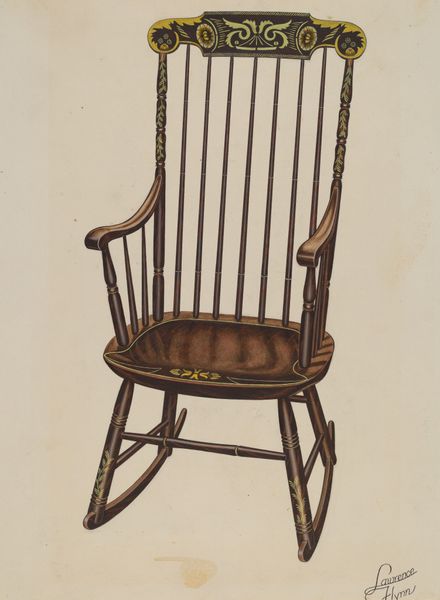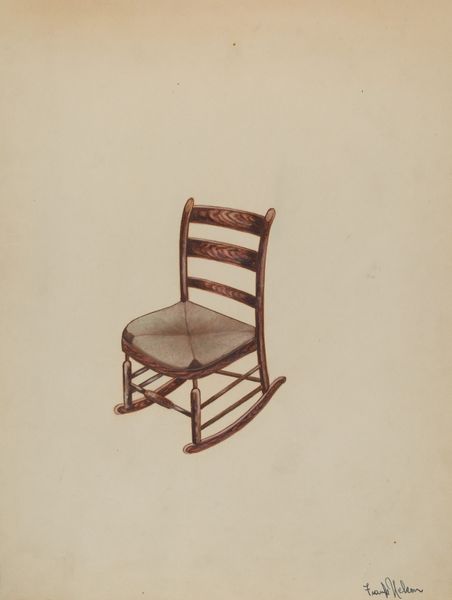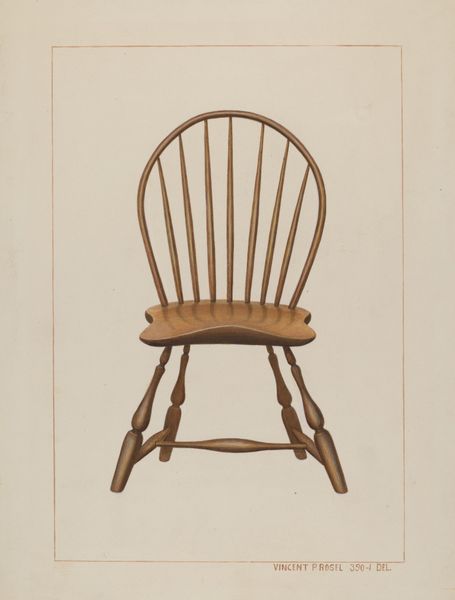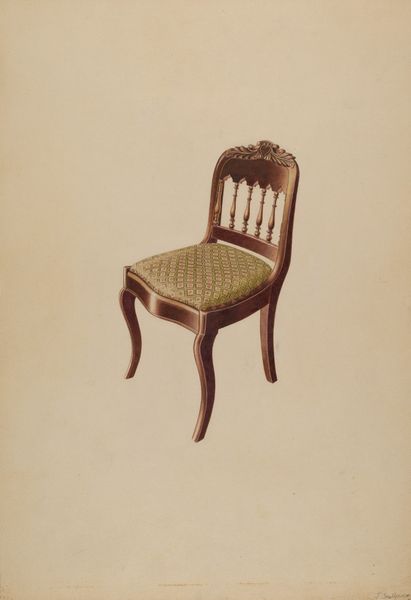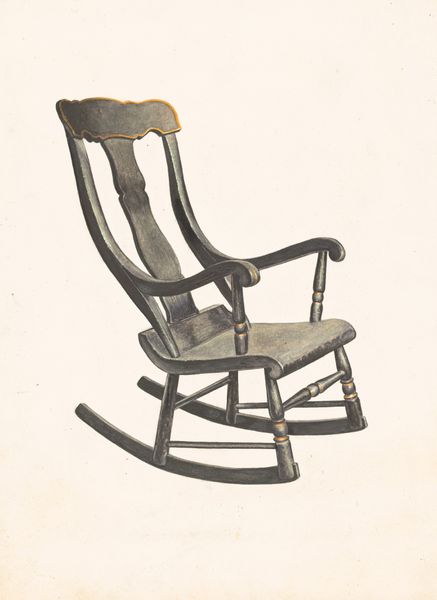
drawing
#
drawing
#
caricature
#
watercolour illustration
#
academic-art
#
realism
Dimensions: overall: 44.6 x 33.8 cm (17 9/16 x 13 5/16 in.) Original IAD Object: 38 1/2"high; 16"wide, seat front; back 13"wide. Rockers 38"long
Copyright: National Gallery of Art: CC0 1.0
Curator: Here we have LeRoy Griffith's "Rocking Chair" from 1940, rendered meticulously in watercolor. Editor: There's something remarkably still about this rocking chair; it almost feels like an architectural study. It lacks any occupant, any human warmth. Curator: Indeed, this isolated portrayal speaks volumes. During this era, representations of domestic objects, like this chair, often carried socio-political undertones, particularly regarding concepts of labor, family, and the ideal American home during the Depression. The very act of isolating it may point to an underlying sense of uncertainty. Editor: Structurally, it’s interesting how Griffith used linear precision, giving each spindle the same width and attention as he did the smooth rockers themselves. I find the near monochrome approach to coloration emphasizes the chair's simple form. It focuses attention on the shape itself, as though he wants us to examine its very existence. Curator: And its presence – or absence. Consider the social programs introduced by Roosevelt's New Deal and their effect on the American home. Did such a home and life even exist for many? Was it accessible for some versus a constant dream? This image feels fraught with the tensions of that moment. Editor: Yet it has such a restrained palette, a certain muted calmness... Curator: Precisely. The apparent stillness masks the social questions seething beneath. Was "peace at home" really a widespread concept during such trying times? Was that even realistic for families struggling in a ravaged American economy? Griffith leaves that very much to our own interpretation. Editor: It seems fitting that a seat associated with relaxation and rest should invite questions regarding labor and accessibility. The careful realism amplifies those subtle but pointed tensions that sit so plainly. Curator: It's a starkly simple, yet profound observation on the very fabric of the American identity, seen through the lens of a single, empty chair. Editor: Indeed. Sometimes, the quietest forms contain the loudest of social commentaries.
Comments
No comments
Be the first to comment and join the conversation on the ultimate creative platform.

